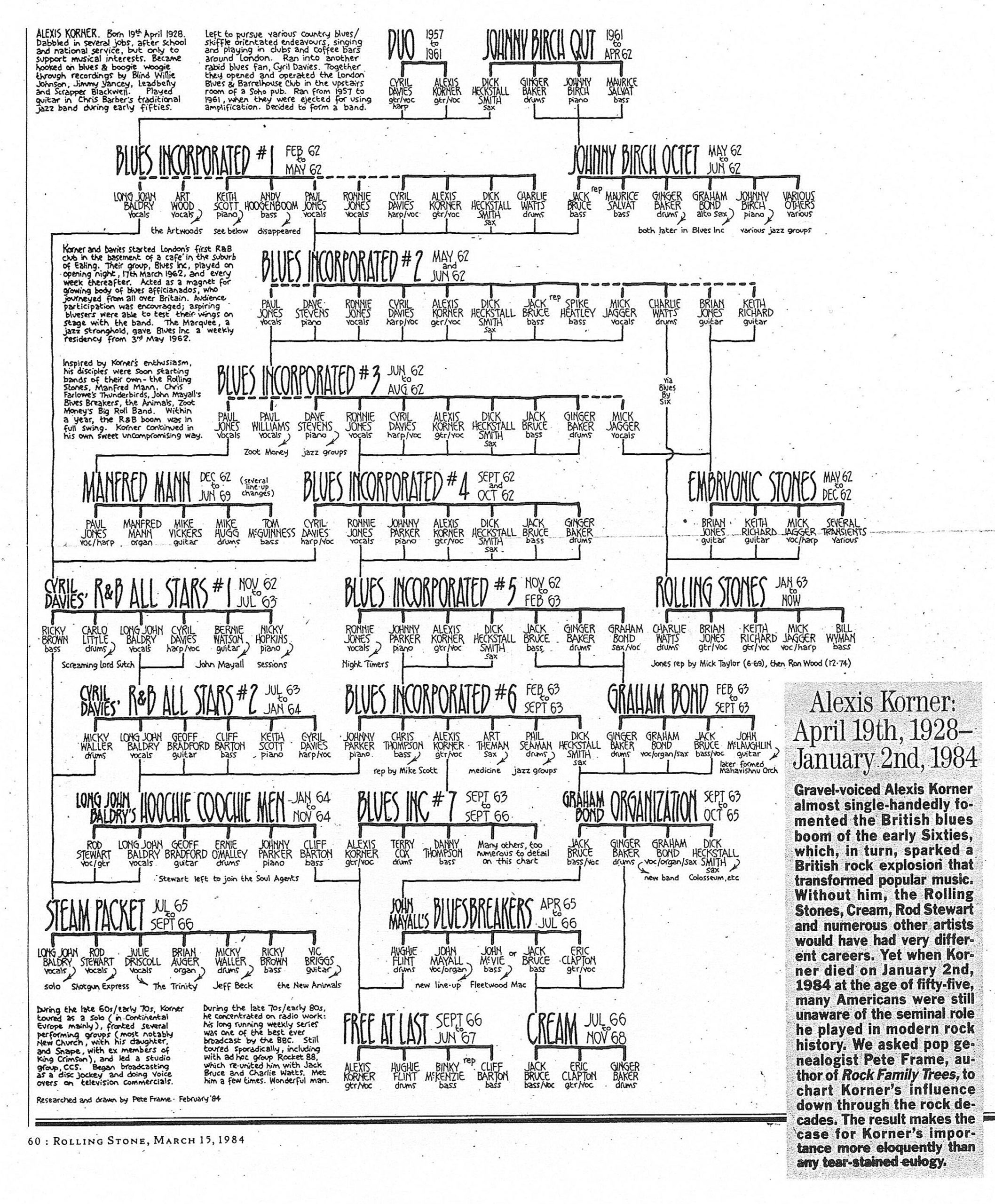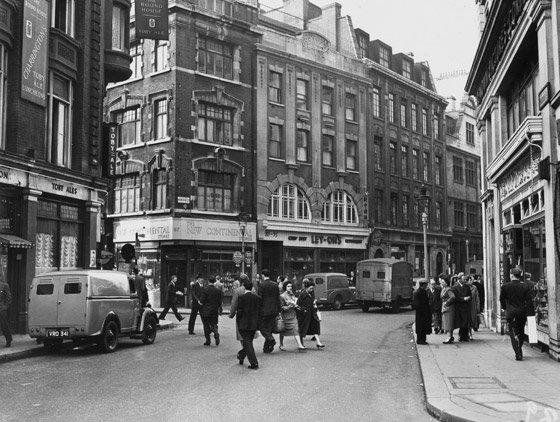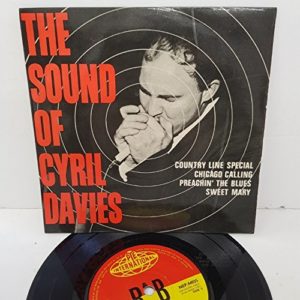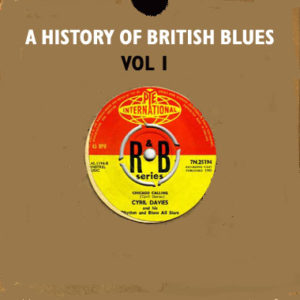FOR A VIDEO ABOUT ALL THIS SEE ….
It seems hard to believe but the roots of British R&B lay not with a certain rubber lipped, snake hipped vocalist called Mick Jagger but with an ageing, balding, ex-panel beater, nicknamed ‘Squirrel’ or Cyril Davies.

Above– A pre 1962 photo with Cyril Davies on left, Charlie Watts on drums and Alexis Korner with perhaps Jack Bruce on bass.

Along with Alexis Korner and Chris Barber this triad began what became an overwhelming tide of blues that shaped the next fifty years of rock music.

Cyril Davies helped to pioneer electric blues in Britain as part of Chris Barber’s band. Barber had a traditional jazz band which was a hot commodity at the time in the late fifties but they also did blues for part of their performances. Barber was also instrumental in bringing American Blues performers to the UK for tours.

Above Wardour Street in Soho and the Roundhouse Pub (left on picture) in about 1960. That pub is where the very early British blues scene originated.
(Also on that street the Flamingo Club famous later in the sixties for the Hammond organ based jazz blues of Georgie Fame)
Below-In 1962 this seminal blues album came out in the UK.


In March ’62, after building up a sizeable following at the Roundhouse Pub in Soho they moved to west London’s Ealing Jazz and Blues Club.
Below from left-? pianist, Alexis Korner, Jack Bruce, Mick Jagger, Cyril Davies. Drummer not seen could have been Charlie Watts.

By the end of May ’62, the band had a more regular line up and was offered a Thursday night residency at The Marquee Club on Oxford Street. Their first appearance attracted just 127 loyal followers but by October they were regularly pulling in a crowd of 1,000. In November 1962, Davies left the band to form his own Cyril Davies’ All-Stars with members recruited from Screaming Lord Sutch’s Savages, including drummer Carlo Little, pianist Nicky Hopkins, Long John Baldry on vocals and black female trio, the Velvettes.
Davies soon claimed that weekly Thursday night Marquee residency for himself and subsequently played there every week throughout ’63. He also released two singles that year, ‘Country Line Special/’Chicago Calling’ (at the time the only British single that ‘American Only’ purists bought) and ‘Preachin’ the Blues/Sweet Mary’.
He passed away on January 7th 1964, two weeks before his 32nd birthday. On January 28th, the first of two benefits concerts in aid of his wife and two children took place at the Flamingo featuring Georgie Fame & the Blue Flames, Alexis Korner and the remaining All Stars under the new banner Long John’s Hoochie Coochie Men. The second took place at Fairfield Hall in Croydon on Feb 21st and featured Sonny Boy Williamson and Chris Barber’s band. Cyril Davies was on the verge of national recognition. Whether he would have been successful in the long term is questionable, but it remains undisputed that he was the greatest harmonica player in this country at that time. (Courtesy of Paul ‘Smiler’ Anderson, July 2014).
Below-On the Hullabaloo TV show. Cyril Davies All Stars featuring Long John Baldry and the Velvelettes. 1963
The show was produced by Jack Good who also produced the first Blues incorporated album.
The next year this EP record was made.

Below from Hullabaloo 1963- Long John, Cyril and the Velvelettes
Another version of Mojo this time a year later in 1964. Long John Baldry with the Beatles in the audience balcony on a Beatles TV Special called “Around the Beatles” with Backing vocals by Liverpool’s Vernon Girls. Baldry by this time had gone his own way with the Hoochie Coochie Men who may have been backing him on this video..
If you can stand to read anymore here is a good page from the UK Blues Federation and here from wikipedia.

Above The early Rolling Stones playing at The Crawdaddy Club in West London. Note in those days the sixth Stone Ian Stewart playing maraccas though his best work was on piano and organ. He played on many records but at some point it was decided he wasn’t optically acceptable for live performances. He was always a Stone though and played on many Stones albums.

